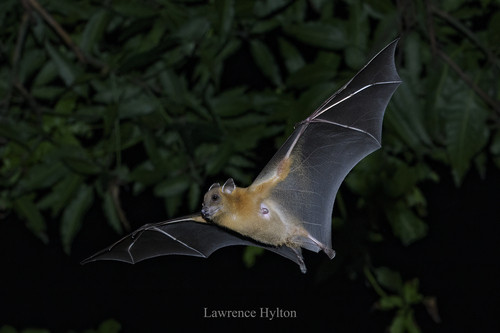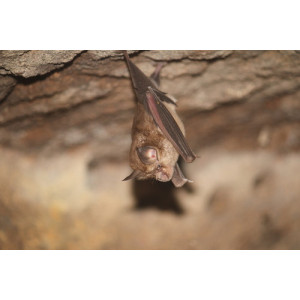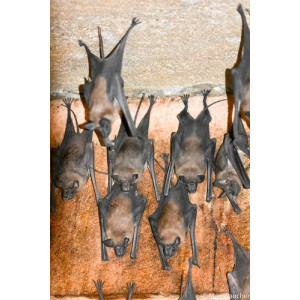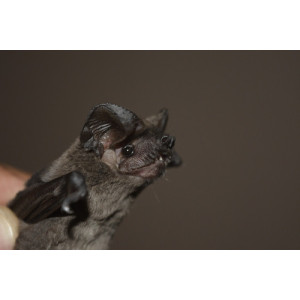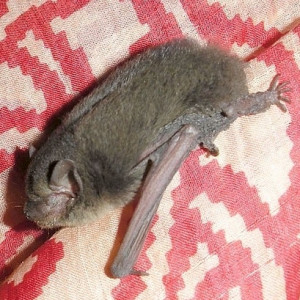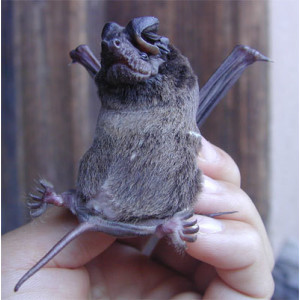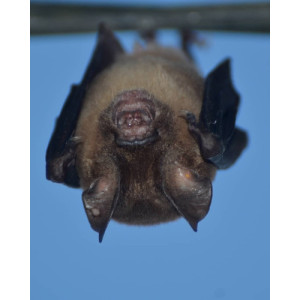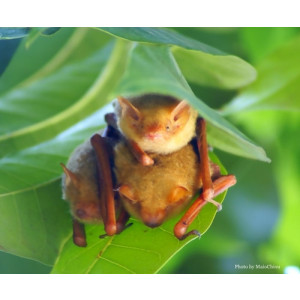Greater Short-nosed Fruit Bat Did you see this animal?
Scientific Name : Cynopterus sphinx
Family : Pteropodidae
Order : Chiroptera
Class : Mammalia
Phylum : Chordata
Habitat : Forest
Description : The greater short-nosed fruit bat is its relatively large size, with a wingspan of up to 80 cm and a weight of up to 200 g. Its fur is usually brown or gray, and it has large, dark eyes and long, pointed ears.
As their name suggests, these bats primarily feed on fruit, although they will also consume nectar and pollen. They play an important ecological role as pollinators and seed dispersers, helping to maintain the health and diversity of forest ecosystems.
Greater short-nosed fruit bats are social animals and are usually found in large colonies, which can number in the thousands. They roost in caves, abandoned buildings, and other sheltered locations, and they are known to migrate seasonally in search of food and suitable roosting sites.
The mating behavior of these bats is poorly understood, but it is believed that males compete for access to females during the breeding season. Females typically give birth to a single offspring, which they nurse for several months before it is able to fly and forage for itself.
The greater short-nosed fruit bat primarily feeds on fruit, although it will also consume nectar and pollen. It has specialized teeth and jaws that allow it to crush and extract the juice from tough fruit.
Like many other bat species, the greater short-nosed fruit bat uses echolocation to navigate and locate food in its environment. It also communicates using social calls, which can vary in frequency, duration, and amplitude depending on the situation.
Little is known about the reproductive behavior of the greater short-nosed fruit bat, but it is believed to breed seasonally, with males competing for access to females. Females give birth to a single offspring, which they nurse for several months.
Despite their importance to ecosystems and their cultural significance in some regions, greater short-nosed fruit bats are threatened by habitat loss, hunting for food and medicine, and disturbance of roost sites. Conservation efforts are focused on protecting remaining habitat, educating local communities and promoting sustainable practices that benefit both humans and bats.
As their name suggests, these bats primarily feed on fruit, although they will also consume nectar and pollen. They play an important ecological role as pollinators and seed dispersers, helping to maintain the health and diversity of forest ecosystems.
Greater short-nosed fruit bats are social animals and are usually found in large colonies, which can number in the thousands. They roost in caves, abandoned buildings, and other sheltered locations, and they are known to migrate seasonally in search of food and suitable roosting sites.
The mating behavior of these bats is poorly understood, but it is believed that males compete for access to females during the breeding season. Females typically give birth to a single offspring, which they nurse for several months before it is able to fly and forage for itself.
The greater short-nosed fruit bat primarily feeds on fruit, although it will also consume nectar and pollen. It has specialized teeth and jaws that allow it to crush and extract the juice from tough fruit.
Like many other bat species, the greater short-nosed fruit bat uses echolocation to navigate and locate food in its environment. It also communicates using social calls, which can vary in frequency, duration, and amplitude depending on the situation.
Little is known about the reproductive behavior of the greater short-nosed fruit bat, but it is believed to breed seasonally, with males competing for access to females. Females give birth to a single offspring, which they nurse for several months.
Despite their importance to ecosystems and their cultural significance in some regions, greater short-nosed fruit bats are threatened by habitat loss, hunting for food and medicine, and disturbance of roost sites. Conservation efforts are focused on protecting remaining habitat, educating local communities and promoting sustainable practices that benefit both humans and bats.
Distribution in Bangladesh
References:
description written by:Asad U. Tanvir,Department of Zoology,Jagannath University,Dhaka; reviewed by:Muntasir Akash,Department of Zoology,University of Dhaka;Taxonomic Checklist:Red List of Bangladesh Volume 2: Mammals, 2015, IUCN; information sources:wikipedia,iucnredlist.org; photo credit:Md Jayedul Islam (Jagannath University,Dhaka), photo copyright: Md Jayedul Islam.more information please contact with us.
description written by:Asad U. Tanvir,Department of Zoology,Jagannath University,Dhaka; reviewed by:Muntasir Akash,Department of Zoology,University of Dhaka;Taxonomic Checklist:Red List of Bangladesh Volume 2: Mammals, 2015, IUCN; information sources:wikipedia,iucnredlist.org; photo credit:Md Jayedul Islam (Jagannath University,Dhaka), photo copyright: Md Jayedul Islam.more information please contact with us.
